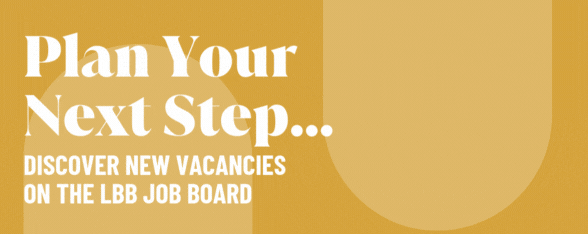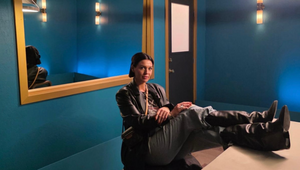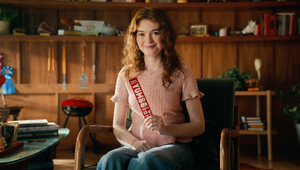
All in Musings: Advertising While Living with an Invisible Disability

For folks living with disabilities navigating working conditions often means having to be self advocates for systems to become equitable. Most times, we think of these systems broadly, in terms of time off, changes to physical locations, digital accessibility, and ensuring benefits include the healthcare employees need. But for folks living with invisible disabilities--those that aren't immediately identifiable--cultural aspects for particular industries, such as the heavily engrained culture of food and drink in the advertising world, can offer unique challenges.
Necko Fanning, NA Director of DEIB, Havas Creative (NF)> Thank you so much for taking the time to chat, Andrew.
Andrew Malordy, comms strategy director, Havas New York (AM)> It’s my pleasure, Necko – thanks for inviting the conversation!
NF> First off, I’m sure folks would love to know a little more about you. How long have you been with Havas and what do you do?
AM> I joined Havas about 6 months ago, working for the NY office but fully remote from Denver, CO. I was brought in as a Comms Strategy Director, splitting most of my time between two of our newer clients – but also tasked with building and growing a new culture and process around Comms as a strategic discipline. Having worked at a mix of media and creative agencies over the years, I’ve grown a particular skillset for bridging both worlds (and teams) together to develop holistic campaigns where brands can connect with audiences in more meaningful ways.
NF> Sounds like a lot of work. I’m sure folks are super grateful for all that you’ve done. We’re here to talk about existing with invisible disabilities. Often, when we talk about invisible disabilities folks have a tendency to think of neurodivergence, mental health, and other disabilities and illnesses which don’t often manifest visibly for the general populace. However, there are other folks who exist with physical disabilities that because of where they work, clothing, or other factors, we’re never able to see. You happen to be one of those folks, correct?
AM> Yes! I was diagnosed with Crohn’s Disease just after my 21st birthday circa 2013, but my “onset” was so rapid/severe that I lost my large intestine about a month later – and have been living with a permanent Ileostomy ever since.
NF> Would you mind explaining a little further for us what both those things mean? What is Crohn’s Disease? What is an Ileostomy?
AM> Crohn’s Disease means living with an overactive immune system, particularly in the gastrointestinal (GI) tract which experiences bouts of inflammation that cause an array of issues/symptoms. In my case, Crohn’s was mostly isolated to my large intestine (colon) and essentially killed the organ before it had a chance to recover from various medications.
People typically struggle with Crohn’s for years, trying countless medications before ever opting for life with an Ostomy – more commonly known as a “poop bag”, and typically framed as a “last resort” or “worst case scenario”. But in my case, the decision was made for me and saved my life before I even had a chance to Google what I’d be living with.
If you can picture a little red clown nose protruding from my abdomen, just to the side of my belly button, that’s my stoma. It’s quite literally the end of my small intestine and since I no longer have a colon, it’s the end of my GI tract and how/where I go to the bathroom. It’s a miraculous feat of medical advancement that’s been around for centuries, but even with medical insurance I spend thousands of dollars a year on durable medical supplies that allow me to contain the area, keeping things safe and clean.
NF> Wow, that’s amazing. You’re right; it really does sound like an incredible medical feat. Thanks so much on educating me on the subject! I’m curious, the advertising world is infamous for food, alcohol, working lunches, and after-hours dinners and drinks; does living with a stoma and having Crohn’s limit your ability to participate in any way?
AM> I’ll start by acknowledging my love for food and cooking, and that I’m incredibly fortunate to still be able to eat the foods that I love and to drink alcohol, in moderation. My only restriction with an Ostomy is avoiding “roughage”; food that’s literally rough in texture and difficult to digest – which can cause gas issues (not just noise, but pain) and runs the risk of a blockage (exactly what it sounds like, not a fun trip to the ER).
While it may seem easy to avoid salads and stick to carbs and meat, Ostomy life comes with its own set of logistics and planning, especially in the workplace. It took me years to develop the right “skills” for hiding my disability and not letting it interfere with my work or mental health. The secret is eating, all the time. If I go 3-4+ hours without food, by the time I finally do eat my Ostomy will make strange noises. When you literally release gas out of your abdomen, and can’t control it or feel it coming, you can imagine the confusion for those around you when they hear noises coming from an area that doesn’t make sense to them.
Now imagine every lunch and learn, working lunch, client dinner, office party, or the best of them all: stopping for a lunch break in the middle of a new business pitch. Early in my career I was “never hungry” or “just ate before this meeting”, but I was always hungry and counting the minutes to when I could eat in private. Nowadays, I’ve learned to carry my own snacks and am unashamed to eat when no one else is, to make sure that I can partake when the larger group is ready for a meal. But there will always be unexpected moments where regardless of my preparation, my Ostomy does what it wants, when it wants – so my gut response in the workplace is to turn down food, despite always being hungry.
NF> That sounds like it can make certain work functions really difficult, or at least uncomfortable for you. Do you have an example of a time or times when you’ve found it challenging to be in this industry because of this?
AM> In hindsight, the first three or four years of my career – coinciding with my new life with an Ostomy – were consistently difficult to navigate. As you stated earlier, the advertising industry is infamous for lavish dinners and events, which was especially true living in NYC and working for media agencies on large accounts with large budgets. Only in more recent years have I recognized that I’d been making my disability worse for myself, thinking that I needed to hide my authentic self from both colleagues and clients – even from HR, for fear of potential discrimination as I worked to “climb the corporate ladder”. These difficulties certainly haven’t gone away, but I’ve learned how to overcome them with confidence over time.
NF> I’m sorry to hear that there are still enough instances of discrimination against folks with disabilities that you’ve felt you had to conceal a part of yourself. I’m curious; if you could implement one change to our industry right now that would make it easier for folks living with your type of disability or one similar, what would it be?
AM> It starts from a place of awareness, which I’m hoping this conversation can facilitate! While it’s common for food to be incorporated into the workplace, and it’s become normal to ask if any attendees have dietary restrictions, those accommodations only apply to the type of food being ordered. It doesn’t account for the broader logistics of planning to eat together in a confined space, which some people may not be as comfortable with as others – particularly when clients or external partners are in the mix, not just internal colleagues.
Even though I can confidently handle these types of situations today, I recognize that it took me the better part of a decade to get to this place. The obvious answer is to create inclusive environments where others don’t have to struggle in the ways I had to for years – whether that means offering options before forcing employees into potentially polarizing situations, or, better yet, creating a healthy dialogue and atmosphere where employees feel empowered to speak up and share their authentic selves with others.
NF> Those are great recommendations and I think they’re things that a lot of leaders can implement rather quickly just by virtue of awareness. Now, I have it on fairly good authority that you’re going to be working with Havas New York to stand up a Village-level ERG focused on folks living with disabilities and their allies, is that correct?
AM> Yes! We’re still working through some of the logistics, but I’m really excited to get this ERG in motion. Disabilities comes in all shapes and sizes, and if my own personal experience is proof of anything it’s that the workplace needs to be flexible in unexpected ways to accommodate everyone’s needs. To me, inclusivity means something different for everyone, and the best way to create an environment where employees can show up to work authentically is to start a dialogue where transparency is welcomed and used to inspire change.
NF> I couldn’t agree more! I’m pretty excited to have you come on board and lead an area that we all can—and should—be making greater strides in. I just want to thank you again for carving out some time for us to chat and for volunteering to have this conversation with such vulnerability; it’s been great!
AM> Thanks for letting me share my story, Necko! I really appreciate all that you're doing for inclusivity at Havas.












